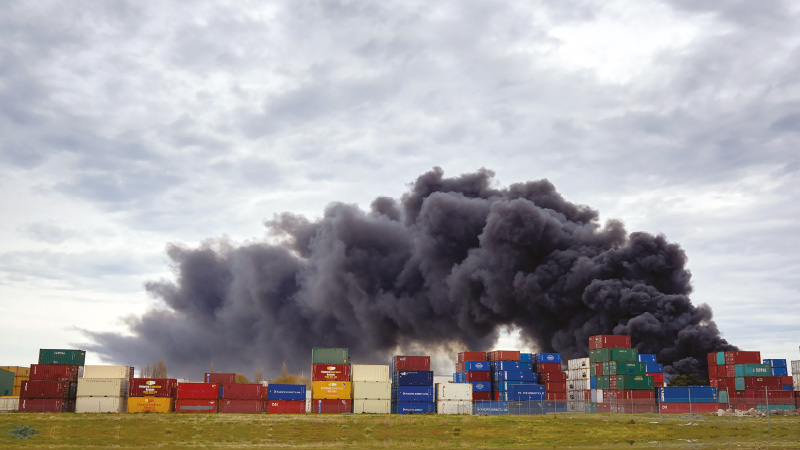Any country that relies on life-sustaining supplies from overseas sources must ensure that their seaports and airports are able to function as required. This means that well-made and tested plans must already be in place whenever an occurrence that could incapacitate the port arises. Resilience, the capability to recover and quickly resume functionality, is therefore an imperative for both air and seaports. However, because the latter generally receives and delivers the bulk of disaster relief supplies, seaport managers, particularly in island states must constantly review, check, audit and reassess disaster risk management plans.
Any country that relies on life-sustaining supplies from overseas sources must ensure that their seaports and airports are able to function as required. This means that well-made and tested plans must already be in place whenever an occurrence that could incapacitate the port arises. Resilience, the capability to recover and quickly resume functionality, is therefore an imperative for both air and seaports. However, because the latter generally receives and delivers the bulk of disaster relief supplies, seaport managers, particularly in island states must constantly review, check, audit and reassess disaster risk management plans.
Resilience, as it is said, begins with failure. And it is the task of port managers to identify and acquire the resources, capacities and skills necessary for the organisation to bounce back to functionality. It is against this backdrop that the Inter-American Committee on Ports (CIP) and the Organization of American States (OAS) held a second regional workshop on Improved Disaster Risk Management for Caribbean Ports. This is part of the project implemented by the CIP Secretariat with financial contributions from the governments of Italy and the United States. Institutional support came from the Caribbean Disaster Emergency Management Agency, Caribbean Shipping Association, CIP National Port Authorities, HudsonAnalytix, National Port Authority of Peru, Port Management Association of the Caribbean, T&T Salvage, and the United States Coast Guard.
The aim of the workshop was to strengthen institutional disaster risk management capabilities in Port and Maritime Authorities across the Caribbean, and to reduce the impact of natural and anthropogenic disasters on port operations.
The virtual workshop (June 28 to July 8, 2022) reviewed key elements of efficient disaster risk management in Caribbean ports and strategies for increasing port resilience. In attendance were 20 participants from 10 Caribbean countries, including Antigua and Barbuda, Belize, Dominica, Grenada, Guyana, Jamaica, Saint Kitts and Nevis, Saint Lucia, Saint Vincent and the Grenadines, and Trinidad and Tobago.
Three modules were presented: (1) Risk Management, (2) Disaster Preparedness, Response, and Recovery; and, (3) Business Continuity, instructors from the United States Coast Guard, T&T Salvage, Tropical Shipping, and WiMAC discussed methods to mitigate threats and effective responses to recover from an incident.
The most critical elements discussed in the Risk Management module included risk assessment, contingency planning, and continuous improvements through lessons learned. Discussions in the module on Preparedness, Response and Recovery included prevention, preparation, response and recovery, resiliency and stakeholder coordination. The Business Continuity (Management) module addressed risk register and vulnerability assessment in wide-ranging discussions about effective methods to: (a) mitigate threats to port operations; (b) effectively respond to; and, (c) recover from an incident, participants spoke to an expansive array of priorities and strategies.
Mitigation of threats aroused discussions about understanding a port’s vulnerability through a risk assessment that addresses criticality (asset identification, criticality to operations, business impact analysis); (ii) potential threats and hazards; and, (iii) vulnerability.
Effective response discussions brought participants to focus mainly on crisis communication management and stakeholder coordination in a crisis. Key takeaways included:
• knowing your stakeholders’ pre-disaster circumstances, and maintaining regular communication post-disaster.
• understanding what “crisis” means for the institution, the government, and the nation;
• communicating and collaborating in a manner that is realistic by managing perceptions and expectations; and,
• understanding that no institution can respond to all crises, but can limit them to a set that, in the event of it happening, can be managed adequately, effectively, and efficiently.
The priorities and takeaways mentioned here are not an exhaustive list of disaster risk management strategies and present merely a sampling of what is most critical.

